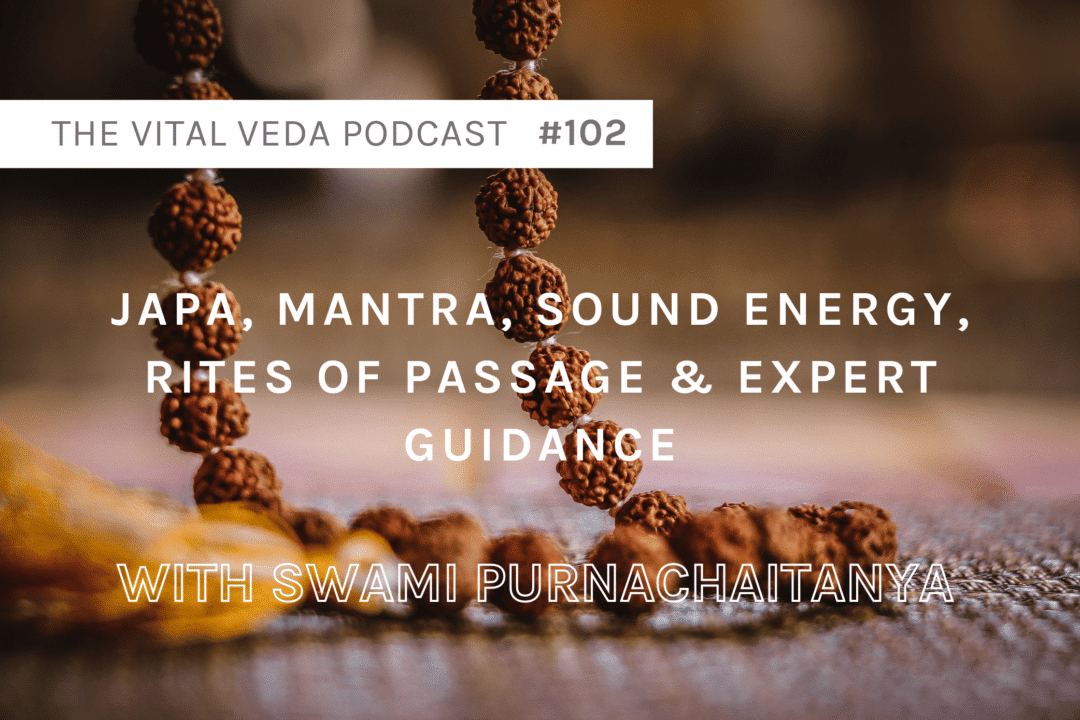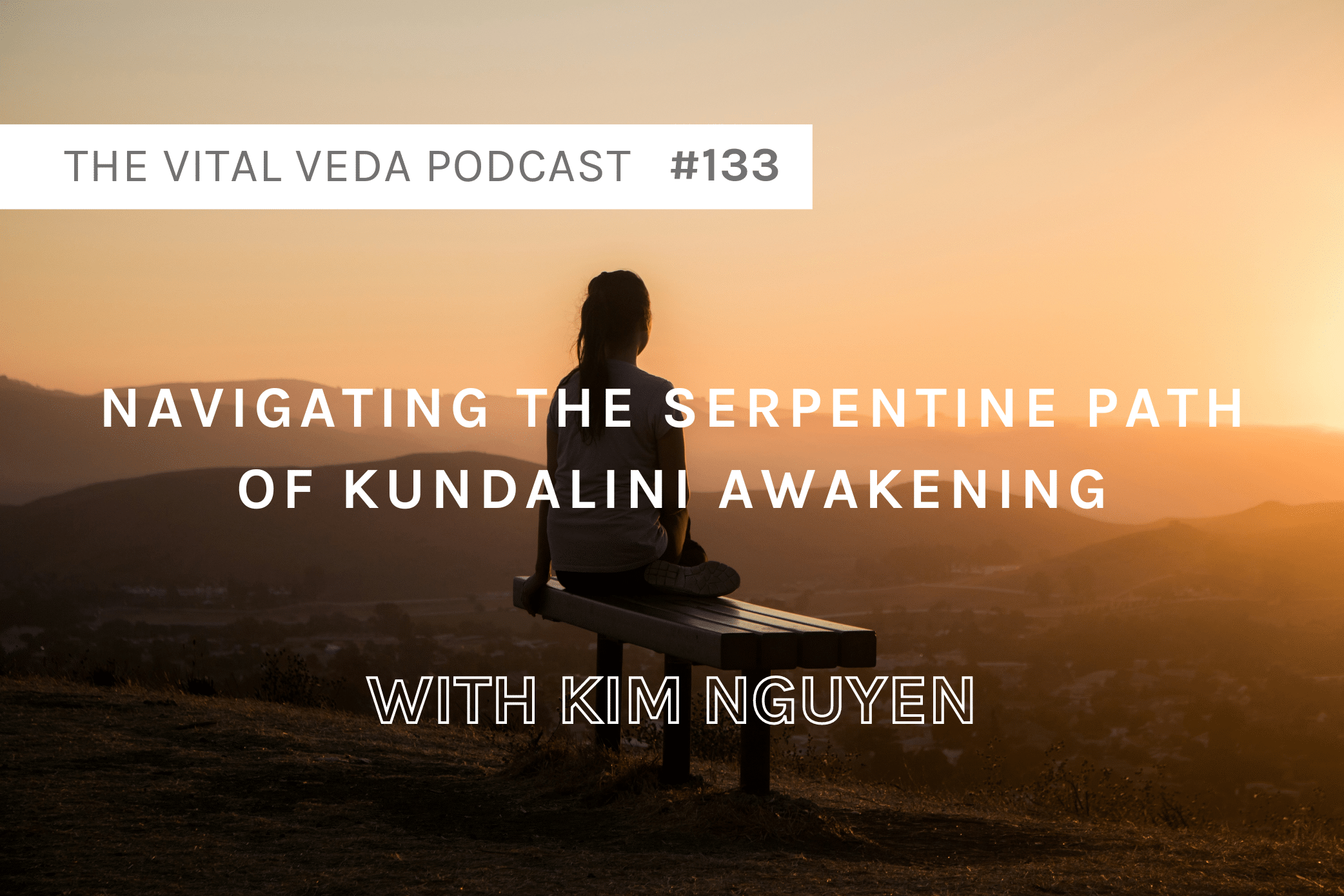Mantras are sound vibrations that harness the subtle energies of this creation.
When used in a proper way that considers the various influences that come from our local environment and beyond, the mantras can help improve different areas of life.
Sound vibrations can create and support profound and positive changes in our own physiology, those around us, the wider community and society.
Join Swami Purnachaitanya, who for over 15 years has been studying and teaching the Science of Mantras to harness specific sound vibrations to interact with Natural Law for greater evolution. Swamiji offers expert advice to utilise the power and sacredness of sound safely and effectively.
ABOUT OUR GUEST: SWAMI PURNACHAITANYA
Born and brought up in the Netherlands, Swami Purnachaitanya from a young age had a keen interest in the spiritual practices, cultures and philosophies of the East.
As a teenager he met his spiritual Master, Gurudev Sri Sri Ravi Shankar, and started his journey to explore the traditions of yoga, meditation, mantras and ancient wisdom.
A life dedicated to purity of knowledge, practice and experience, sharing his Master’s wisdom through the programs of The Art of Living.
Swami Purnachaitanya has become a public figure traveling the world extensively in Asia, Africa and Europe, conducting a wide range of self-development programs in over 20 countries.

His relevance stems from his ability to bridge the philosophies of the East and the West and his skill in simplifying arcane concepts. He plays the role of spiritual guide, peace builder, story teller, author, healer and teacher, as he triggers dramatic change in the lives of his audience.
Table of Contents
The Meaning Of “Jai Guru Deva”
It means “Victory to Guru Consciousness”, and is meant to both enliven that aspect of our consciousness within us, as well as acknowledge that the wisdom we are carrying forth is not our innovation but has instead been bestowed to us by a lineage of Gurus.
The Meaning Of The Name “Purnachaitanya”
“Purna” means ‘that which is full’ and “Chaitanya” means consciousness.
The meaning is “One who’s consciousness has the quality of fullness”.
The Four Stages Of Life According To Vedic Tradition
First 20/25 years —> one is a student & brahmacharya (celibate spiritual seeker). One’s energy should be devoted to learning as much as possible, developing a good moral compass & a sense of ethics, connecting with the spiritual Self, and so on.
Second 20/25 years —> one becomes a house-holder and starts to actively contribute to society. Have a family, raise children, have a job, etc.
Third 20/25 years —> one’s children are grown ups & most of the responsibilities of the previous stage have become fulfilled, so one begins to do Seva (selfless service) towards society. One can share the wisdom & experience learned with others.
Forth 20/25 years —> this is called sanyas (meaning ‘Renunciate’). One can really step away from ‘worldy’ duties and really focus on self-realization.
In some cases, certain individuals can skip one or two of these phases (e.g. remaining a brahmachari for the rest of one’s life or moving from the stage of brahmacharya directly to sanyas).
What Does Being A “Swami” Really Mean
By taking sanyasi vows, one becomes a ‘Swami’ and leaves many facets of worldly life behind. Devoting one’s self to the pursuit of Self-Realization or Enlightenment as well as to become a selfless servant of humanity.
The Ego is surrendered, thus one stops living life out of any form of self-interest, and vows to devote one’s Self to God & Humanity (which ultimately are one and the same).
What Is A Mantra According To Vedic Tradition
Mantra is the sound or vibration that can take us beyond the mind.
The Power Of Japa (a.k.a. Mantra Repetition)
In the same way that the repetition of negative thoughts perpetuates suffering and brings the prana (life force energy) levels down, the repetition of mantras increases our vibration, allows us to feel more enjoyment, and be more present & effective in our relationships & daily life chores.
It is one of the main paths or tools for the attainment of Yoga (union with the ultimate intelligence that operates the universe).
There are two types of suffering in the world, one is on a physical level (e.g. breaking a leg, getting bitten by a dog, etc.) and the other is on a mental/emotional level (e.g. depression, anxiety, fear, frustration, etc.).
- Most of the suffering we experience in our day-to-day lives is on a mental/emotional level.
Japa Meditation is one of the most effective tools to help transcend the self-imposed boundaries of the mind, therefore it not only pulls us out of our suffering, but even prevents it from emerging in the future.
- By strengthening the mind and raising the level of vibration & prana (life force) in the body, one becomes resilient and unfazed by the stimuli that would otherwise trigger a state of suffering.
Developing Siddhis (Superhuman Capabilities) By Means of Mantra Repetition
Siddhis are Divine superhuman capabilities that can be developed utilizing yogic technologies.
Most of the commonly known mantras can be utilized by everyone and anyone with similar results, without the need of any proper initiation or rituals.
Other mantras that are more special and unique require an initiation by a Guru in order to become effective. This Guru needs to be someone who carries the mantra siddhi (meaning perfection in that particular mantra) which quickly grants the benefits or fruits of that mantra.
In order to develop Yogic Siddhis with japa, it is essential to hold the mantra siddhi, and therefore initiation by a Guru into the corresponding mantras is generally considered to be essential.
The Influence of The Gunas (Qualities) On Your Mantra Practice
When Sattva guna (pure shinning light) is predominant, that is when you chant mentally (mānasa japa), because that is the most effective.
When the Rajas guna (aggravated light) is predominant, there is restlessness & all types of thoughts are coming up so if chanted inwardly the mantra practice gets broken and its ineffective.
- Chant by whispering the mantra (upāṃśu japa). Chanting the mantra like that will bring the rajas down. The moment you are sufficiently settled you can start chanting inwardly.
When the Tamas guna (trapped light) is predominant, if the mantra is chanted inwardly the body goes off to sleep because the moment the mind expands a little, everything ‘goes off’.
- Chant out loud (vaikharī japa). This will energize the system and take it out of tamas.
The Ayurvedic Daily Routine: Parent Edition
- Ideally & if possible take a shower before and wear clean clothes
- Sit comfortably in a quiet place with little to no distractions
- Don’t ware shoes
- Devote your full attention to the practice – in general terms, quality is more important than quantity. It’s not so much about how many times you repeat the mantra, but the extent to which your consciousness is permeated by the mantra.
- It’s the attitude or feeling of the practitioner that endows the object with the aspect of consciousness (devata) that is being worshiped. If it is a mechanical process, even though you might be doing everything to perfection, that devata won’t animate the object.
- If some days the devotion is not there, it is still very important to be disciplined and do the practice.
- Use a Japa bag – it keeps your mala protected & doesn’t allow anyone to see how many malas you have chanted and that way the ego is kept on check.
- Keep the Japa mala clean – don’t wear it during the day.
- If you don’t use a Japa bag still make sure you are still protecting it from from Dṛṣṭidoṣa (the external influence of other humans) – use a cloth or a piece of clothes to cover it from sight of others.
- The mala shouldn’t go below the navel – the Japa bag is also good for this.
- Don’t touch the mala with your index finger during the process of counting beads.
- If you are chanting one mala you start right after the Guru bead (109th bead) and count all the way till the bead 108th.
- If you’re are chanting more than one mala you start right after the Guru bead (which is the 109th bead) and count all the way till the bead 108th. After that do not continue going, flip the mala around and count in the opposite direction. Never cross & continue chanting beyond the Guru bead.
Quantity vs. Quality in Japa
In most cases, when there isn’t a very specific goal in the japa practice, the quality of the chanting is by far the most important part.
But there are other cases in which quantity gains a greater importance:
1. When there is a specific sadhana (spiritual practice) prescribed, a certain amount of malas may be needed in order to attain the intended goal of the yogi.
2. Some mantras require to be chanted a certain amount of times per day for a specific amount of days.
3. There is the concept of puraścaraṇa which requires the repetition of each aksara (syllable that invokes the diety) to be done 100,000 times in order to gain the mantra siddhi.
- e.g. Om Nama Shivaya is composed of 5 aksaras or syllables and therefore needs to be chanted 500.000 times in order to attain the mantra siddhi.
- e.g. The Gayatri Mantra is composed of 24 syllables so it needs to be chanted 2.4 million times in order to attain the mantra siddhi.
The Number 108 In The Vedas
All the reasons for which the number 108 is considered the most sacred number according to Vedic tradition.
- 9 celestial bodies (navagrahas) —> 1 + 0 + 8 = 9 planets
- There are 9 planets known as grahas & 12 constellations (or signs) known as rasis, if you multiply these you get 108 possible qualities of time. In most cases one should at the very least chant a mantra for each of the 108 qualities of time.
- The distance between the sun and the earth is 108 times the diameter of the Sun.
- The distance between the moon and the earth is 108 times the diameter of the Moon.
- The diameter of the sun is 108 times the diameter of the earth.
Please leave me a comment below (I love to read every single one).
iTunes, Spotify, Sticher, Google Play
Please seek advice from a qualified practitioner before starting any new health practice.







